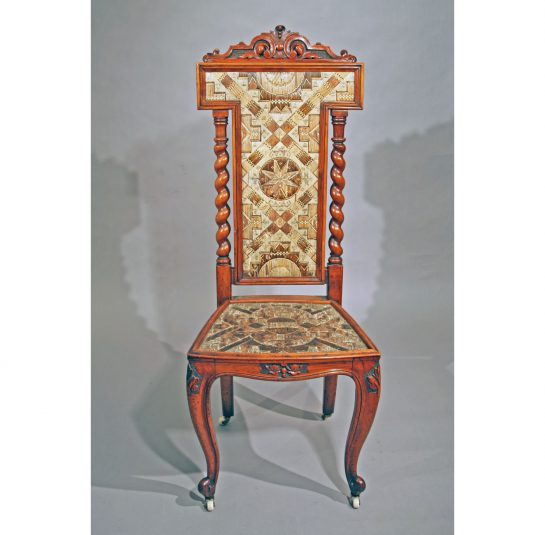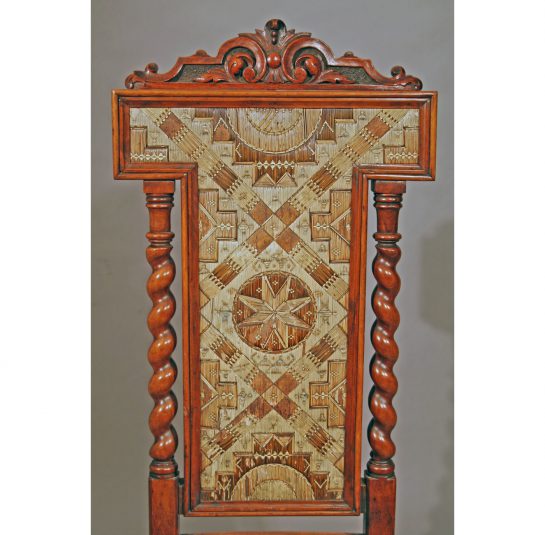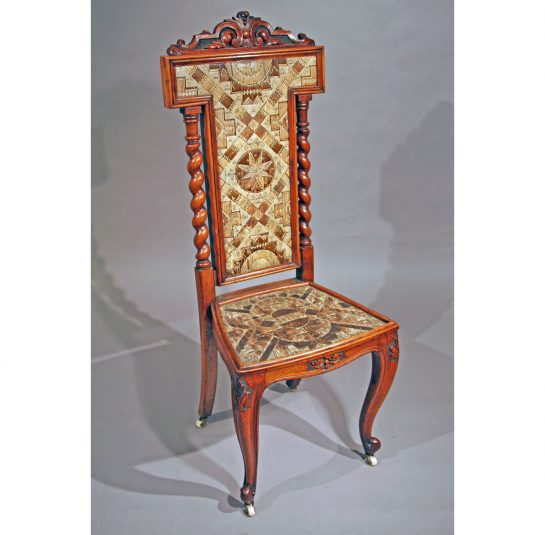Side Chair with Micmac Porcupine Quillwork Panels Probably Scottish, 1850-1875
SOLD
Mahogany side chair with carved crest inset with a porcupine quillwork panel flanked by barley twist spiles. A quillwork seat rests on legs supported by a trapezoidal stretcher. Four cabriole feet in the French manner end on porcelain casters.
It is difficult to pin point when the Micmac Indians began using porcupine quills to decorate their clothes, accessories and furnishings. At any rate, it was well before the 17th century. Porcupine quills were used to decorate the tribe’s fringed buckskins and fur robes as well as birch bark. The technique required women to first soften the quills in their mouths before flattening them with their teeth. Once softened, flattened and dyed, the quills could be woven in to birch bark.
The Micmac Indians of Acadia were one of the Algonquin tribes that inhabited areas of present day Newfoundland, the Gaspe Peninsula, Canada’s Maritime Provinces including Nova Scotia, New Brunswick, Prince Edward Island and swaths of New England, particularly Maine. In his diaries French explorer Samuel de Champlain recalled seeing the exquisite quill ornaments found on the costumes of female Algonquin dancers as early as 1603. Over the ensuing centuries Micmac quillwork evolved and the range of objects created with porcupine quills multiplied as the Micmac women began catering to a burgeoning European souvenir and export market.
It is difficult to ascertain whether this Micmac side chair is of American or European manufacture. The Micmacs created the back and seat inserts but the chairs themselves were made by the Scots, English and Irish as well as by American furniture makers. Interestingly many of the best preserved examples are found in European collections although a number of Canadian institutions as well as renowned American museums such as the Museum of Fine Arts in Boston have fine Micmac chairs.
Dimensions: 40 1/2"h. 16 1/2"h (seat) x 16"w x 15 1/4"d
Item ID: F-SF-CH 105


